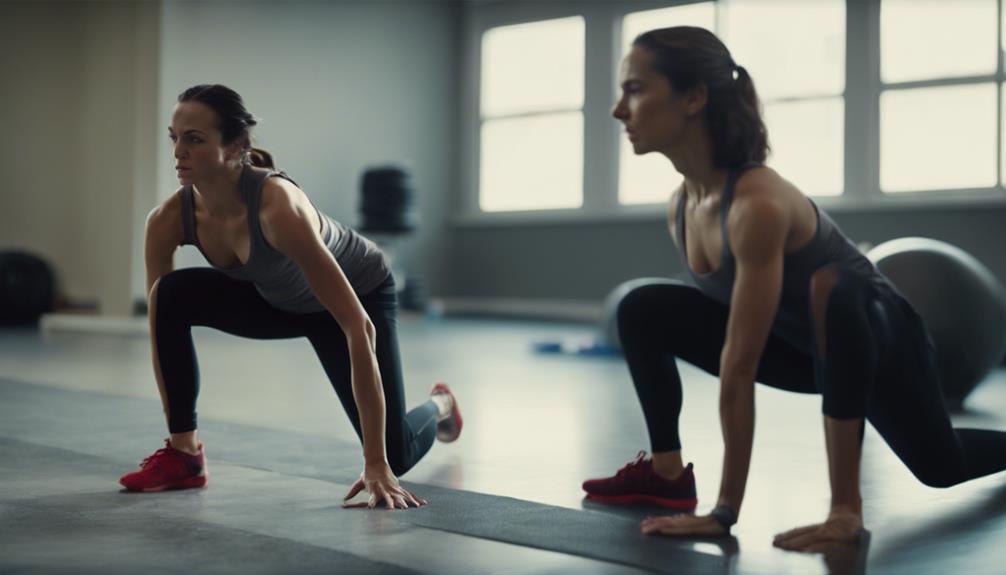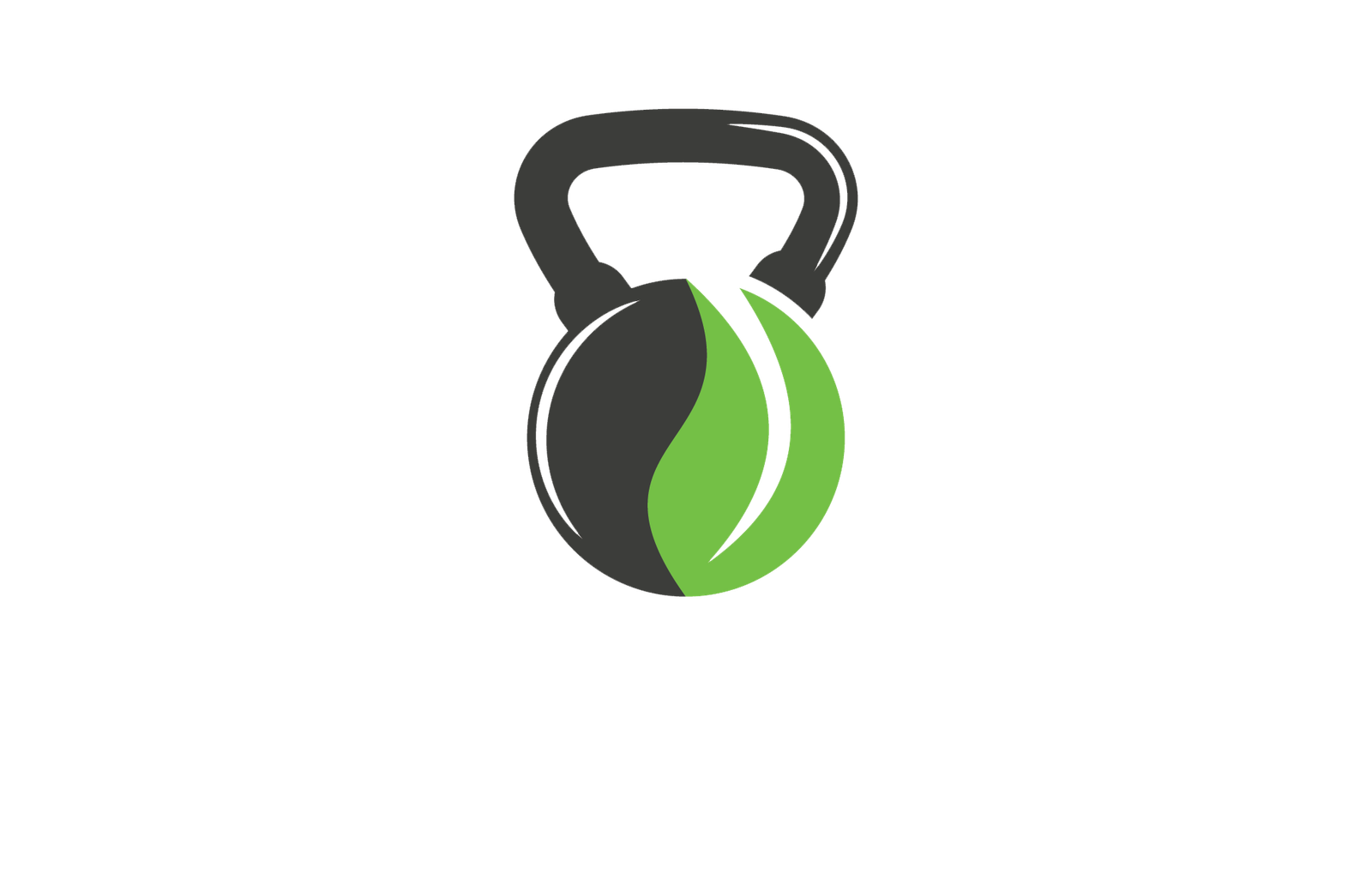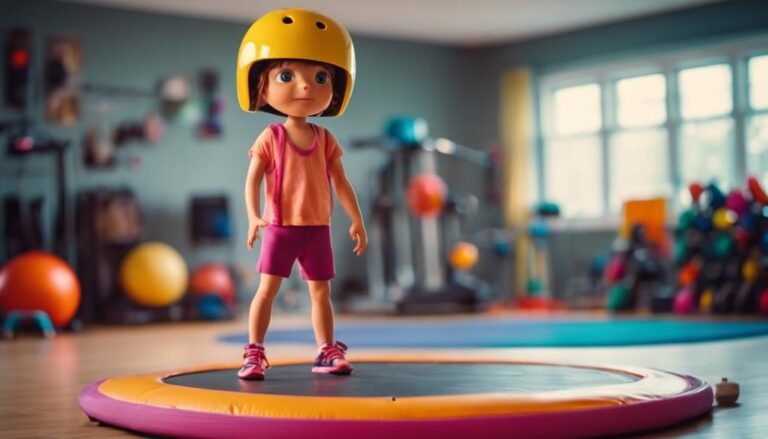Don't miss our holiday offer - 20% OFF!

Avoiding Common Mistakes as a Fitness Beginner
Hurdle common fitness mistakes that can hinder progress and learn how to overcome them to achieve your goals.
As we start our fitness journey, we're prone to common mistakes that can derail our progress and even lead to injuries. We neglect proper warm-ups and stretching, ignore correct exercise form and technique, and set unrealistic goals that lead to discouragement. We underestimate the importance of rest and recovery, and inconsistent workout schedules hinder our progress. By being aware of these common pitfalls, we can take the necessary steps to avoid them and focus on making consistent progress. As we move forward, we'll discover more essential tips to help us stay on track and achieve our fitness goals.
Key Takeaways
- Neglecting proper warm-ups and stretching can lead to muscle soreness, decreased flexibility, and injury.
- Unrealistic expectations and goals can lead to discouragement and burnout, so set realistic goals that align with your current fitness level.
- Ignoring rest days can lead to mental burnout, physical consequences, and plateaus, so prioritize sleep hygiene and rest.
- Failing to track progress makes it difficult to achieve fitness goals, so regularly track progress and set specific, measurable goals.
- Comparing oneself to others steals motivation and focus from one's own goals, so celebrate small wins and focus on your own journey.
Ignoring Proper Warm-Ups and Stretching
When we hit the gym or undertake a new exercise routine, we often overlook a vital step that sets the tone for a successful and injury-free workout: proper warm-ups and stretching. By skipping this crucial step, we're putting ourselves at risk of muscle imbalances, tissue damage, and ultimately, injury. Cold muscles are more prone to strains and pulls, leading to muscle soreness and decreased flexibility.
Incorporating flexibility exercises into our routine can help prevent these issues. A well-structured warm-up prepares our muscles for the upcoming exercise, reducing the risk of injury and improving overall performance. Without it, we may experience reduced performance, fatigue, and even long-term tissue damage. By making warm-ups and stretching a priority, we can ensure a safer, more effective workout that yields better results. It's time to prioritize this essential step and make it a non-negotiable part of our fitness routine.
Incorrect Exercise Form and Technique
As we focus on perfecting our workouts, it's equally important to prioritize proper exercise form and technique, since even slight misalignments can lead to ineffective exercises and, worse, injuries. We've all been there – motivated to get in a good workout, we rush through exercises without paying attention to our form. But this can lead to muscle imbalances, where some muscles become overdeveloped while others are neglected.
To avoid this, we need to focus on proper alignment throughout each exercise. Here are three key things to keep in mind:
- Start with lighter weights: It's better to start with lighter weights and focus on proper form than to risk injury with heavier weights.
- Engage your core: Your core muscles, including your abs and lower back, are essential for maintaining proper alignment and generating power.
- Slow and controlled movements: Avoid jerky, bouncy movements, and instead focus on slow, controlled movements that allow you to maintain proper form throughout the exercise.
Overestimating Fitness Level and Goals
We've all been guilty of overestimating our fitness level and setting unrealistic goals, which can lead to discouragement and burnout when we inevitably fail to meet them. This mistake can be particularly damaging, as it sets us up for disappointment and frustration. When we overestimate our abilities, we're more likely to push ourselves too hard, too fast, which can result in injury or exhaustion. Additionally, unrealistic expectations can lead to fitness plateaus, where we plateau and fail to make progress, further demotivating us.
It's essential to set realistic goals that align with our current fitness level. This means being honest with ourselves about our strengths and weaknesses and creating achievable milestones. By doing so, we can celebrate small victories, stay motivated, and make consistent progress. Remember, fitness is a journey, not a destination. It's vital to focus on progress, not perfection. By being realistic about our abilities and setting achievable goals, we can avoid the pitfalls of overestimation and stay committed to our fitness journey.
Inadequate Rest and Recovery Time
As we endeavor to reach our fitness goals, we often overlook a vital aspect of the process: rest and recovery. We're guilty of pushing ourselves too hard, neglecting the importance of adequate rest days and sufficient sleep patterns. By doing so, we're not only hindering our progress but also increasing the risk of injury and burnout.
Ignoring Rest Days
We often underestimate the importance of rest days, neglecting to realize that our bodies need time to recover and rebuild from the physical stress of exercise. As beginners, we're enthusiastic to see progress and may feel like we're sacrificing gains by taking a day off. However, ignoring rest days can lead to serious consequences.
Here are just a few of the risks we take when we don't prioritize rest:
- Mental Burnout: Constantly pushing ourselves can lead to mental exhaustion, causing us to lose motivation and enthusiasm for our fitness journey.
- Physical Consequences: Insufficient rest can cause muscle damage, increased risk of injury, and decreased performance.
- Plateaus and Setbacks: Without adequate rest, our bodies can't recover and adapt to the demands we're placing on them, leading to plateaus and potential setbacks.
Insufficient Sleep Patterns
Our bodies require a delicate balance of exercise and rest, but too often, we sacrifice sleep for the sake of convenience, neglecting the crucial role it plays in our fitness journey. As beginners, we're prone to prioritizing gym time over sleep, not realizing that inadequate rest and recovery can hinder our progress. Insufficient sleep patterns can lead to fatigue, decreased motivation, and even injury.
We need to prioritize sleep hygiene to maximize our chances of getting quality rest. This means establishing a consistent sleep schedule, creating a relaxing bedtime routine, and avoiding screens before bed. By doing so, we can improve our dream quality, allowing our bodies to recover and rebuild muscle tissue. When we don't get enough sleep, our bodies can't fully recover, leading to subpar performance and increased risk of injury. We can't afford to neglect our sleep; it's time to make it a priority. By focusing on sleep hygiene and improving our dream quality, we can optimize our fitness journey and reach our goals faster.
Inconsistent Workout Schedules and Plans
As we work towards our fitness goals, we've likely encountered the frustration of inconsistent workout schedules and plans. We've all been there – we start strong, but our motivation wanes, and our workout routine becomes sporadic. By examining our irregular workout patterns and unrealistic fitness goals, we can identify the root causes of our inconsistencies and take steps to create a more sustainable and effective fitness routine.
Irregular Workout Patterns
Inconsistent workout schedules and plans, a common pitfall in many fitness journeys, can drastically hinder progress and lead to frustration and burnout. We've all been there – starting strong, only to fall off the wagon due to conflicting commitments or unrealistic expectations. But it's time to take control of our fitness routines and prioritize consistency.
To avoid irregular workout patterns, we can implement the following strategies:
- Schedule workouts in advance: Treat them as non-negotiable appointments to ensure we show up consistently.
- Allow for flexibility: Life is unpredictable, so it's essential to have a backup plan for when unexpected schedule conflicts arise.
- Make routine adjustments: As our priorities change, our workout schedules should adapt to maintain a balance between fitness goals and daily responsibilities.
Unrealistic Fitness Goals
Setting ourselves up for disappointment with unrealistic fitness goals is a common mistake that can lead to discouragement and abandonment of our workout routines. We've all been there – we envision our dream body and expect to achieve it in an unrealistically short timeframe. But the truth is, fitness is a journey, not a destination. Unreal expectations can lead to fitness frustration, causing us to give up on our goals altogether.
To avoid this, we need to shift our fitness mindset. We must focus on setting realistic goals that align with our lifestyle and fitness level. This means breaking down our long-term goals into smaller, achievable milestones. By doing so, we'll experience a sense of accomplishment and motivation that will drive us to continue our fitness journey. Remember, fitness is not a one-size-fits-all approach. We should prioritize understanding that everyone's fitness journey is unique, and we should focus on progress, not perfection. By adopting a realistic approach to goal setting, we'll be more likely to stick to our workout routines and achieve our fitness goals in the long run.
Unrealistic Expectations and Goals
We often fall prey to unrealistic expectations and goals when we undertake a new fitness journey, fueled by enthusiasm and a desire for rapid transformation. This can lead to disappointment and frustration when our bodies don't respond as quickly as we'd like. To avoid this, let's take a step back and reassess our approach.
Here are three essential strategies to help us set realistic expectations and goals:
- Create a vision board: A visual representation of our goals can help us stay focused and motivated.
- Set specific, measurable goals: Break down large goals into smaller, achievable milestones to track progress and stay accountable.
- Find an accountability partner: Share our goals with a friend or mentor to increase motivation and support.
Insufficient Hydration and Nutrition
As we focus on achieving our fitness goals, we often overlook two critical components that can make or break our progress: hydration and nutrition. It's easy to get caught up in the excitement of starting a new workout routine, but neglecting these essential elements can hinder our progress and even lead to injury.
| Hydration Tips | Nutrition Essentials |
|---|---|
| Drink at least 8-10 glasses of water per day | Plan meals in advance to promote balanced nutrition |
| Aim to drink 16-20 oz of water 1-2 hours before exercise | Include protein-rich foods in every meal to aid muscle recovery |
| Monitor urine color to confirm it's pale yellow or clear | Avoid processed foods and sugary snacks that can hinder progress |
| Bring a refillable water bottle to the gym | Prep healthy snacks, like nuts and fruits, for post-workout fuel |
| Make water intake a habit by keeping a water tracker | Cook meals in bulk to save time and promote healthy eating |
Ignoring Injury Warning Signs and Pain
Pushing through pain and ignoring injury warning signs can be a recipe for disaster, ultimately leading to more severe and long-term damage to our bodies. As beginners, we often underestimate the importance of listening to our bodies and acknowledging the signals they send us. We might think we're being tough or brave by pushing through the ache, but in reality, we're putting ourselves at risk of further injury.
It's essential to develop a healthy Pain Perception and practice Ache Acceptance. This means being attuned to our bodies and recognizing when we need to take a step back and reassess.
Here are three common mistakes to avoid:
- Ignoring sharp pains: Sharp pains are our body's way of telling us to stop and reassess. Ignoring them can lead to more severe injuries.
- Pushing through chronic aches: Chronic aches might not be as severe as sharp pains, but they're still a sign that something is amiss. Ignoring them can lead to long-term damage.
- Disregarding fatigue: Fatigue is our body's way of telling us we need rest. Ignoring it can lead to burnout and decreased performance.
Lack of Progressive Overload and Challenge
By neglecting to challenge ourselves with progressive overload, we're likely to plateau, stagnating our fitness progress and undermining our motivation. This lack of challenge can lead to muscle stagnation, where our bodies adapt to the same old workouts, and we fail to make gains. We hit a strength ceiling, and our progress comes to a screeching halt. To avoid this, we need to continuously push ourselves with progressive overload, increasing the intensity or weight to challenge our muscles and avoid workout stagnation.
Plateau avoidance is vital to achieving our fitness goals. When we don't challenge ourselves, we'll eventually hit a fitness hurdle that's hard to overcome. By gradually increasing the intensity, we can break through these hurdles and continue making progress. To ensure continued progress, we must mix up our workouts, try new exercises, and push ourselves out of our comfort zones. By doing so, we'll avoid stagnation and continue to make progress towards our fitness goals. Remember, progressive overload is key to continuous improvement and avoiding the dreaded plateau.
Misunderstanding Fitness Trends and Fads
As we navigate the ever-changing fitness landscape, we're often tempted by trendy workouts and miracle solutions that promise rapid results. However, we must be cautious not to fall prey to false promises and misinformation that can derail our progress. By examining the pitfalls of fitness trends and fads, we can make informed decisions that support our long-term fitness goals.
Falling for False Promises
We've all been guilty of falling prey to the enticing promises of trendy workouts and miracle diets that promise unrealistic results with minimal effort. It's easy to get swept up in the hype, especially when we're motivated to see results quickly. But the truth is, there's no magic pill or quick fix to achieving our fitness goals.
Here are a few red flags to watch out for:
- Unrealistic Claims: Be wary of programs that promise drastic results in an unrealistically short amount of time. If it sounds too good to be true, it probably is.
- Fake Gurus: Be cautious of self-proclaimed 'experts' who promise miracle cures or quick fixes. Check their credentials and do your research before handing over your hard-earned cash.
- Lack of Scientific Evidence: If a program or product doesn't have any scientific backing, it's likely a scam. Don't fall for fake science or anecdotal evidence.
Ignoring Scientific Evidence
Most of us have, at some point, blindly followed the latest fitness trends and fads without stopping to examine the scientific evidence behind them. We've been guilty of ignoring the red flags, swept up in the excitement of a new 'miracle' workout or supplement. But it's essential we take a step back and critically evaluate the evidence. Misleading studies, cherry-picked data, and confirmation bias can lead us astray. We must be cautious of anecdotal evidence and flawed research that supports pseudoscience claims.
| Red Flags | What to Do Instead |
|---|---|
| Misleading headlines | Look for peer-reviewed studies and reputable sources |
| Cherry-picked data | Check for consistency across multiple studies |
| Confirmation bias | Seek out diverse perspectives and opinions |
Blindly Following Social Media
When one scrolls through their social media feeds, they're bombarded with seemingly endless streams of fitness influencers, celebrities, and self-proclaimed gurus peddling the latest trends and fads, making it increasingly difficult to separate fact from fiction. It's easy to get caught up in the influencer impact and unrealistic ideals presented to them online. They begin to crave virtual validation, and before they realize it, they're sucked into the latest fitness myths.
One must consider three reasons why blindly following social media can be detrimental to their fitness journey:
- Celebrity endorsements can be misleading: Just because a celebrity endorses a product or workout routine doesn't mean it's effective or safe for them.
- Online obsession can lead to misinformation: One must be cautious of the sources they trust online, as misinformation can be rampant in the fitness community.
- Fitness myths can be perpetuated: By blindly following social media, one risks perpetuating fitness myths and unrealistic expectations that can be harmful to their health and well-being.
Not Tracking Progress and Accountability
By neglecting to track our progress and hold ourselves accountable, we're more likely to fall short of our fitness goals and struggle to identify the adjustments needed to get back on track. As beginners, we often underestimate the importance of tracking our progress, which can lead to a lack of motivation and direction.
To avoid this mistake, we need to take ownership of our fitness journey. We can do this by setting clear goals, forming healthy habits, and logging our daily progress. Mindful reflection and self-assessment are also crucial in identifying areas for improvement.
Here are some ways we can track our progress and hold ourselves accountable:
| Tracking Method | Benefits |
|---|---|
| Workout Log | Helps track progress, identifies patterns, and monitors consistency |
| Progress Photos | Visual representation of physical changes |
| Weight and Measurements | Tracks changes in body composition |
| Habit Tracker | Helps form consistent habits and routines |
| Reflection Journal | Encourages mindful reflection and self-assessment |
Comparing Yourself to Others
As we focus on our own fitness journeys, it's easy to get sidetracked by comparing ourselves to others, whether it's a social media influencer or a gym buddy, which can lead to feelings of inadequacy and discouragement. We've all been there – scrolling through Instagram, seeing someone's enviable physique, and wondering why we don't look like that. But let's be real, social media often presents a curated version of people's lives, and it's unfair to compare our behind-the-scenes moments to someone else's highlight reel.
Here are three reasons why comparing ourselves to others is a major fitness faux pas:
- It steals our motivation: When we focus on someone else's progress, we take away from our own motivation to reach our goals.
- It's unfair to ourselves: We're all on different journeys, with unique starting points, goals, and challenges. Comparing ourselves to others is like comparing apples and oranges.
- It distracts us from our own progress: By fixating on someone else's fitness inspirations, we take our eyes off the prize – our own progress and achievements.
Let's shift our focus back to our own fitness journeys and celebrate our own small wins. Remember, fitness is a personal journey, and the only person we need to be better than is the person we were yesterday.
Frequently Asked Questions
How Long Does It Take to See Noticeable Results From a Workout Routine?
"We've learned that it takes around 4-6 weeks to see noticeable results from a workout routine, but consistency matters and patience is required – we've got to stick to it and trust the process."
Can I Get Fit With Just Cardio Exercises and No Strength Training?
We've investigated the theory that cardio alone can lead to fitness, but research suggests it's not enough; solely relying on cardio exercises can lead to muscle imbalance, and we'll miss out on the benefits of strength training.
Will I Lose Muscle Mass if I Take a Week off From Weightlifting?
"We won't lose significant muscle mass if we take a week off from weightlifting, thanks to muscle memory. During the detraining phase, our bodies adapt, and we'll retain most of our hard-earned gains."
Is It Okay to Exercise When I'm Sick or Feeling Under the Weather?
"When we're feeling under the weather, we wonder if it's okay to exercise. As a general rule, we don't push ourselves when illness strikes; we respect our bodies' limits, taking Illness Precautions and waiting until our Fever Threshold subsides."
Do I Need to Hire a Personal Trainer to Achieve My Fitness Goals?
"We don't necessarily need a personal trainer to achieve our fitness goals, but having one can boost fitness accountability and provide expert guidance from a credentialed trainer, ensuring we're on the right track."
Conclusion
As we start our fitness journey, it's easy to get caught up in the excitement and enthusiasm, but let's be real – we've all been there, done that, and learned the hard way. So, what's the takeaway? By avoiding these common mistakes, we set ourselves up for success, not frustration. So, are we ready to get fit, feel amazing, and make it last?



